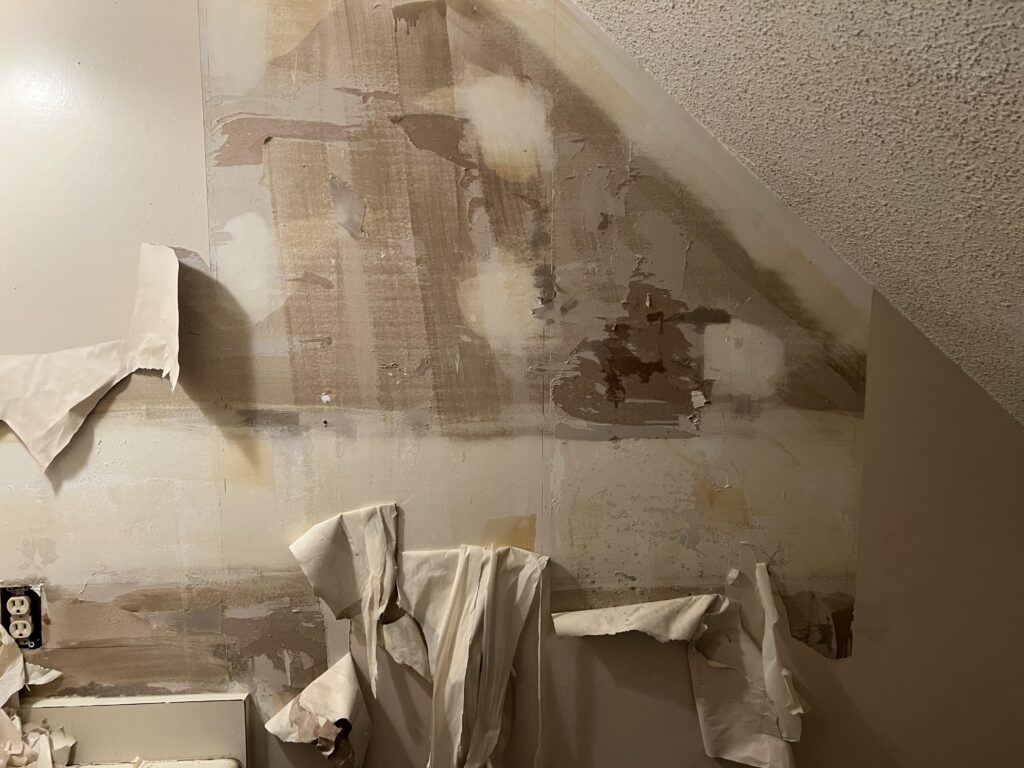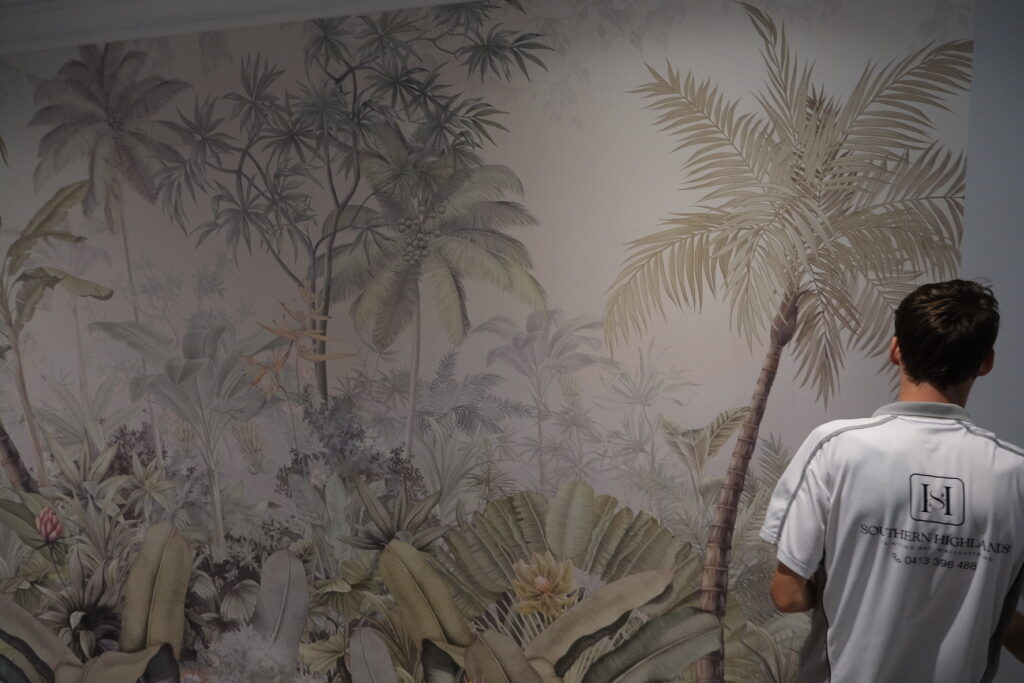You’ve found the perfect wallpaper pattern — the one that will finally bring your room to life. But then the doubt creeps in: Will it ruin my walls when I take it down?
At Southern Highlands Painting and Wallpapering, we know this is one of the most common concerns people have before committing to wallpaper. We’ve seen how the right approach leaves walls in perfect condition — and how shortcuts can lead to costly repairs.
In this guide, you’ll learn the real reasons wallpaper can damage walls, the difference between peel-and-stick and traditional wallpaper, and the simple steps that prevent problems. By the end, you’ll have the facts you need to enjoy your wallpaper with complete confidence.
The Short Answer
Wallpaper can cause damage to your walls — but it usually happens when surfaces aren’t prepared properly, the wrong products are used, or removal is rushed. When done right, wallpaper can be applied and removed without leaving more than minor touch-ups behind.
How Wallpaper Can Damage Walls
- Adhesive Bond Strength
Traditional wallpaper uses paste, which can create a strong bond with your wall’s surface. If the wall wasn’t primed before installation, the paste can stick directly to the plaster or drywall, pulling it away when removed.
Peel-and-stick wallpaper has gentler adhesive, but it can still lift paint if the surface underneath isn’t sound — especially on older or poorly painted walls.
- Paint and Plaster Condition
If your paint is already flaking, chalky, or poorly adhered, wallpaper adhesive will pull it away during removal. Similarly, if your plaster is weak or has hairline cracks, it may chip or crumble. - Surface Texture
Applying wallpaper directly to textured or uneven walls can lead to two problems:
- Poor adhesion, causing bubbling or peeling during use.
- Increased difficulty in removal, which may lead to gouges or scratches.
4. Rushed or Improper Removal
Damage often happens not during installation, but during removal. Pulling wallpaper quickly, at a sharp angle, or without softening the adhesive can strip paint, tear plasterboard paper, or leave stubborn glue residue.

Peel-and-Stick vs Traditional Wallpaper: Risk Levels
See our recent blog here on Peel-and-Stick Wallpaper: How To Choose the Right One
- Peel-and-Stick
- Pros: Easiest to remove, ideal for rentals or temporary designs. Less likely to cause major damage if walls are primed and painted with quality paint.
- Cons: Can still lift paint on older surfaces or low-quality paint finishes. Adhesive can become more aggressive over time, especially in hot or humid rooms.
- Pros: Easiest to remove, ideal for rentals or temporary designs. Less likely to cause major damage if walls are primed and painted with quality paint.
- Traditional
- Pros: Long-lasting finish and strong adhesion, which is great for high-traffic areas or textured wallpapers.
- Cons: Stronger bond makes removal more challenging. More risk of damage if walls weren’t properly primed, especially with older plaster.
- Pros: Long-lasting finish and strong adhesion, which is great for high-traffic areas or textured wallpapers.
How to Prevent Wall Damage
- Prep Walls Properly
- Clean to remove dust and grease.
- Fill holes and sand smooth.
- Apply a good quality primer/sealer. This creates a protective barrier between adhesive and wall surface.
- Clean to remove dust and grease.
- Match the Wallpaper to the Room
- Use peel-and-stick in rentals or rooms you plan to redecorate frequently.
- Use traditional wallpaper for long-term designs, but always over a primed surface.
- Use peel-and-stick in rentals or rooms you plan to redecorate frequently.
- Test Before Full Installation
- Apply a small section in an inconspicuous area and leave it for a few days. Remove gently to see how the wall reacts.
- Apply a small section in an inconspicuous area and leave it for a few days. Remove gently to see how the wall reacts.
- Remove with Care
- For peel-and-stick, use gentle heat from a hairdryer to soften adhesive.
- For traditional wallpaper, use a wallpaper steamer or soaking solution to loosen paste. Work slowly, pulling at a low angle.
- For peel-and-stick, use gentle heat from a hairdryer to soften adhesive.

What If Damage Happens?
Minor paint lifting or small chips can usually be repaired with filler, sanding, and a fresh coat of paint. For larger areas of plaster damage, it may be best to bring in a professional for patching before redecorating.
Wallpaper can transform a room in a way that paint alone often can’t — but only if it’s handled the right way from start to finish. The risk of wall damage isn’t about the wallpaper itself, but about preparation, product choice, and removal technique. If you take the time to prepare your walls properly, match the wallpaper type to your needs, and remove it with patience, you can enjoy the style and personality wallpaper brings without the stress of costly repairs.
Whether you’re decorating your forever home or adding a personal touch to a rental, the key is knowing what you’re working with and taking the right precautions. Done well, wallpaper should leave you with nothing but a beautiful room — and walls that are ready for whatever comes next.

